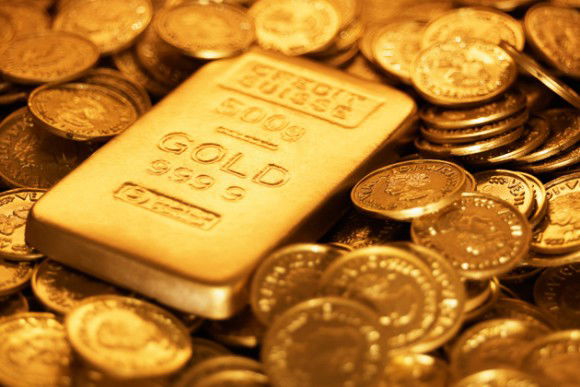Articles features
It's time to start accumulating gold (Currency Corner)

There is absolutely no buying interest in the gold market right now.
Gold futures for August delivery hit a six year intra-day low, with the
spot price settling around $1,134/ounce on Friday.
The best time to buy anything is when it is hated the most especially if one believes in the long term fundamentals.
The
factors driving down the yellow metal are known to everyone by now: 1)
potential US Fed rate hikes (which would lift up real interest rates);
2) a stronger US dollar which will only get stronger with subsequent US
rate hikes unless there is intervention from the Fed; 3) fading of
systemic risk in the financial system as nervousness around Greece, Iran
and China seems to have abated (for the short term at least!) and 4)
market positioning via exchange traded funds (ETFs) still seems to be
net short with a target of close to $1,000/ounce. Add to the above
factors the recent bearish news flow that China is not adding gold to
its reserves at the pace many gold bulls were hoping it would.
So what's factored into the price of the precious metal? I would say all of the above.
Remember
that gold started its painful correction back in 2013 when Ben
Bernanke, the then Fed chief, only hinted at potential monetary
tightening. Two years later, we are still very much in a zero interest
rate policy (ZIRP) environment. During this time, Europe and Japan have
launched their own quantitative easing programs to fight deflation.
There has been cheap money in the system but it just has not found its
way to gold.
Gold had one of the best bull markets any asset
class has seen from 1998 to 2011. The more parabolic the up move, the
steeper the correction. One should view the price decline as a big
correction within a secular bull market rather than the beginning of a
bear market. It is ironical how the yellow metal hit an all time nominal
high at the peak of the European debt crisis in 2011 but failed to
rally when talks between Greece and the Troika (IMF, European Commission
and European Central Bank) were close to breaking down. Europe is
playing a pathetic extend and pretend game and it is clear that a Grexit
is inevitable.
Gold had behaved quite counter-intuitively over
the past many months and my best guess is that strong hands will pick up
gold at these oversold levels. Momentum and algorithms based on
technical levels can surely take gold down another $100 from here but
that too will present a buying opportunity.
Technically, gold
has no "intrinsic value" as it is a non-yielding asset. But I see no new
fundamental factors driving the price of gold down.
Don't fear the rate hikes!
From
1985 to 1987, gold prices rose even though real interest rates were
also rising. The most astonishing breakdown of the relationship was
during October 2003 to October 2006 when US real interest rates rose
from about negative one percent to three percent, while gold gave
investors a return of 60 percent over the same period.
The World
Gold Council conducted a study using simple regression analysis for the
period of January 1975 to May 2013 to observe the price movements of
gold under different real interest rate scenarios. The analysis shows
that the average monthly return of gold since 1975 is 0.6 percent which
roughly translates into a 7.5 percent return in annualised terms.
Although
gold has performed best in times of low real interest rates --
averaging about 1.5 percent monthly returns -- it has also provided
returns in line with its long-term average during a moderate real
interest rate regime providing a 0.7 percent monthly return.
As
Fed chief Janet Yellen has said countless number of times, we will
witness the loosest monetary tightening in monetary policy history.
Selling gold in anticipation of US Fed rate hikes seems like an old strategy now.
(Vatsal
Srivastava is consulting editor with IANS. The views expressed are
personal. He can be reached at vatsal.sriv@gmail.com)



































